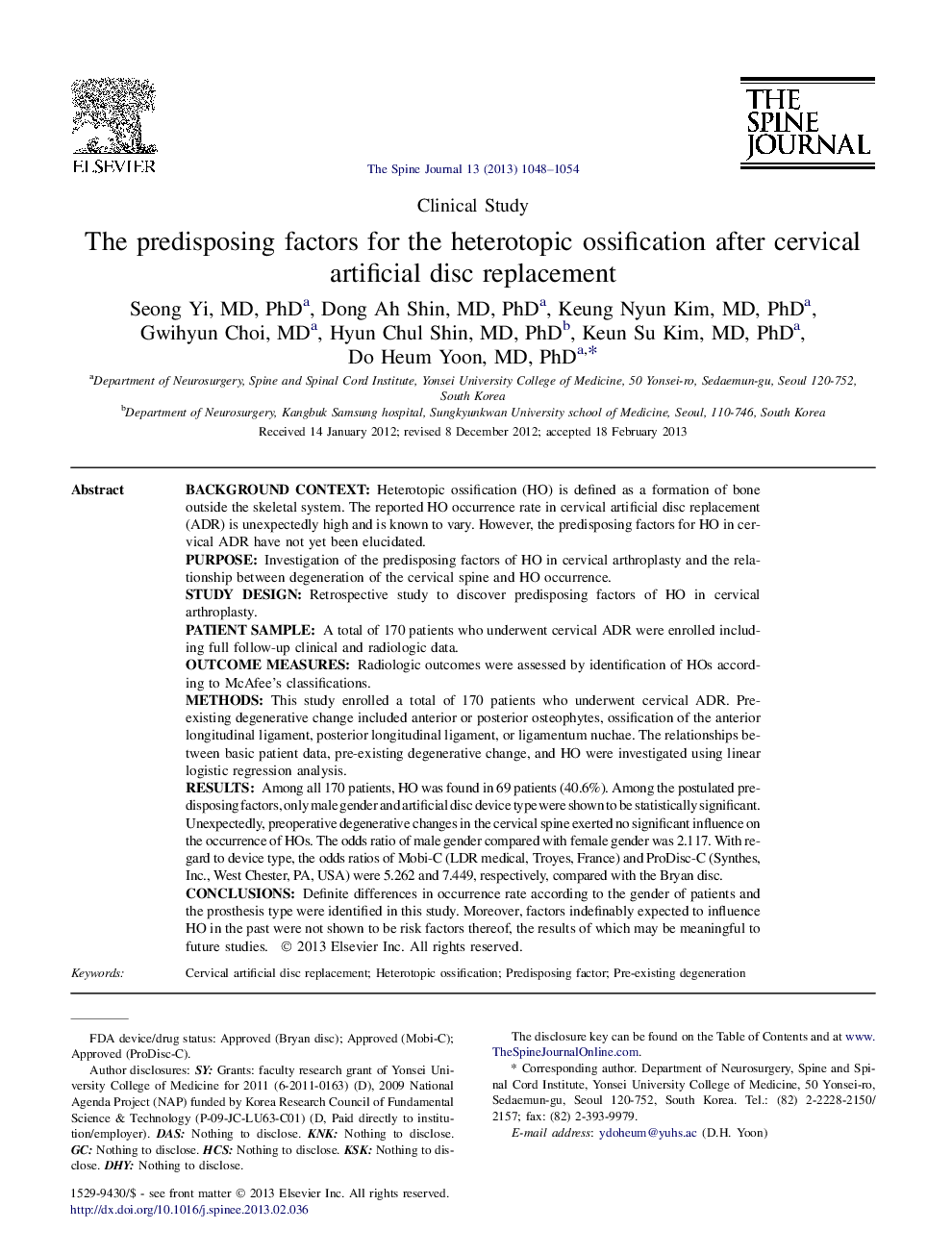| کد مقاله | کد نشریه | سال انتشار | مقاله انگلیسی | نسخه تمام متن |
|---|---|---|---|---|
| 4097624 | 1268594 | 2013 | 7 صفحه PDF | دانلود رایگان |

Background contextHeterotopic ossification (HO) is defined as a formation of bone outside the skeletal system. The reported HO occurrence rate in cervical artificial disc replacement (ADR) is unexpectedly high and is known to vary. However, the predisposing factors for HO in cervical ADR have not yet been elucidated.PurposeInvestigation of the predisposing factors of HO in cervical arthroplasty and the relationship between degeneration of the cervical spine and HO occurrence.Study designRetrospective study to discover predisposing factors of HO in cervical arthroplasty.Patient sampleA total of 170 patients who underwent cervical ADR were enrolled including full follow-up clinical and radiologic data.Outcome measuresRadiologic outcomes were assessed by identification of HOs according to McAfee's classifications.MethodsThis study enrolled a total of 170 patients who underwent cervical ADR. Pre-existing degenerative change included anterior or posterior osteophytes, ossification of the anterior longitudinal ligament, posterior longitudinal ligament, or ligamentum nuchae. The relationships between basic patient data, pre-existing degenerative change, and HO were investigated using linear logistic regression analysis.ResultsAmong all 170 patients, HO was found in 69 patients (40.6%). Among the postulated predisposing factors, only male gender and artificial disc device type were shown to be statistically significant. Unexpectedly, preoperative degenerative changes in the cervical spine exerted no significant influence on the occurrence of HOs. The odds ratio of male gender compared with female gender was 2.117. With regard to device type, the odds ratios of Mobi-C (LDR medical, Troyes, France) and ProDisc-C (Synthes, Inc., West Chester, PA, USA) were 5.262 and 7.449, respectively, compared with the Bryan disc.ConclusionsDefinite differences in occurrence rate according to the gender of patients and the prosthesis type were identified in this study. Moreover, factors indefinably expected to influence HO in the past were not shown to be risk factors thereof, the results of which may be meaningful to future studies.
Journal: The Spine Journal - Volume 13, Issue 9, September 2013, Pages 1048–1054